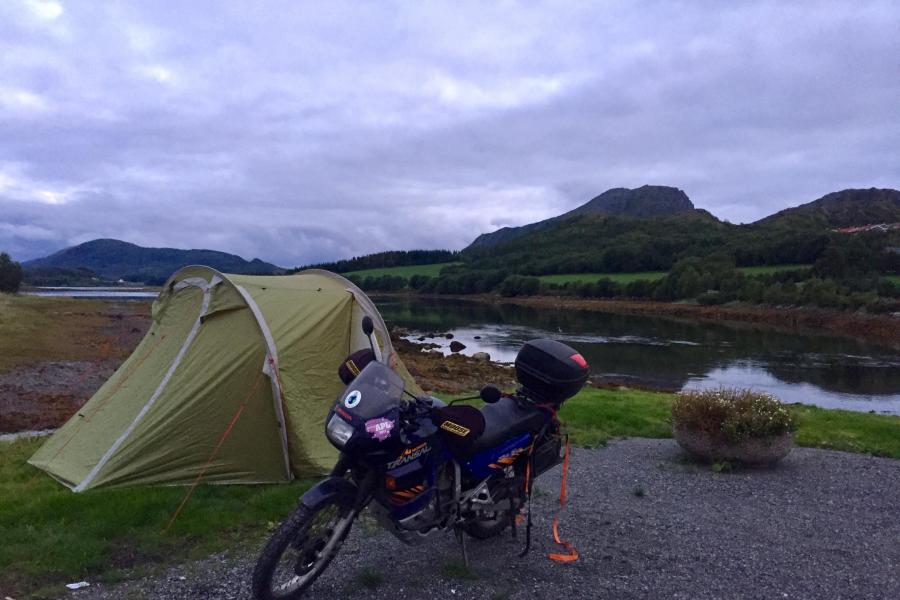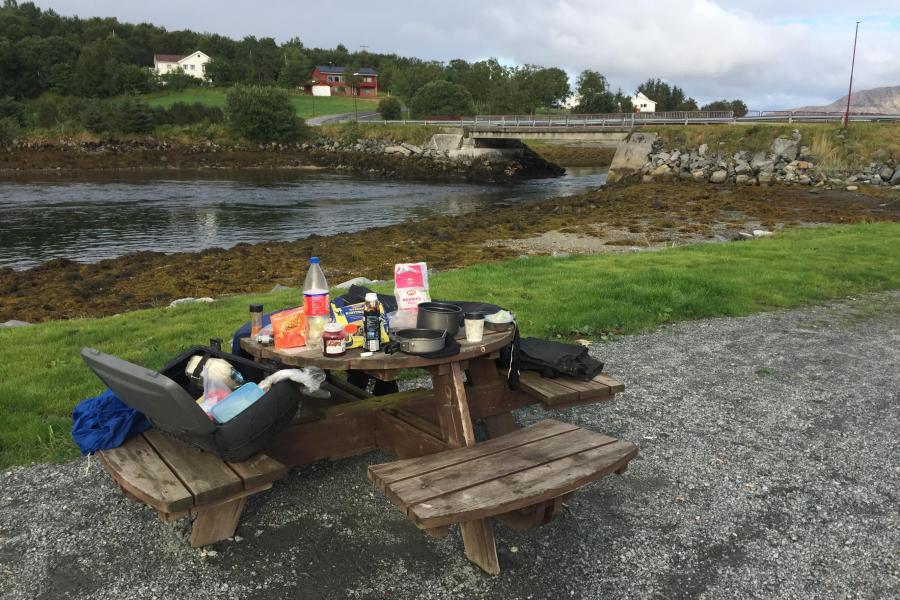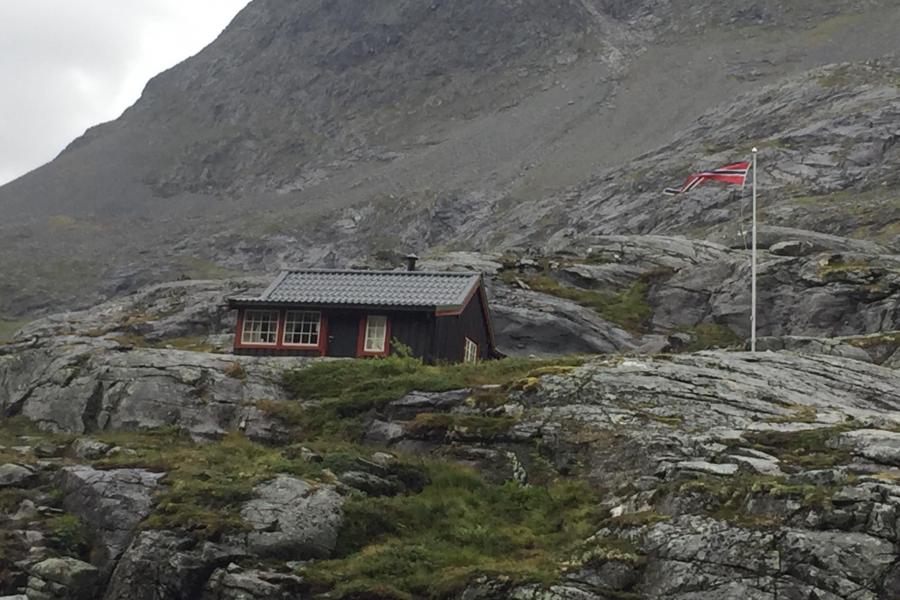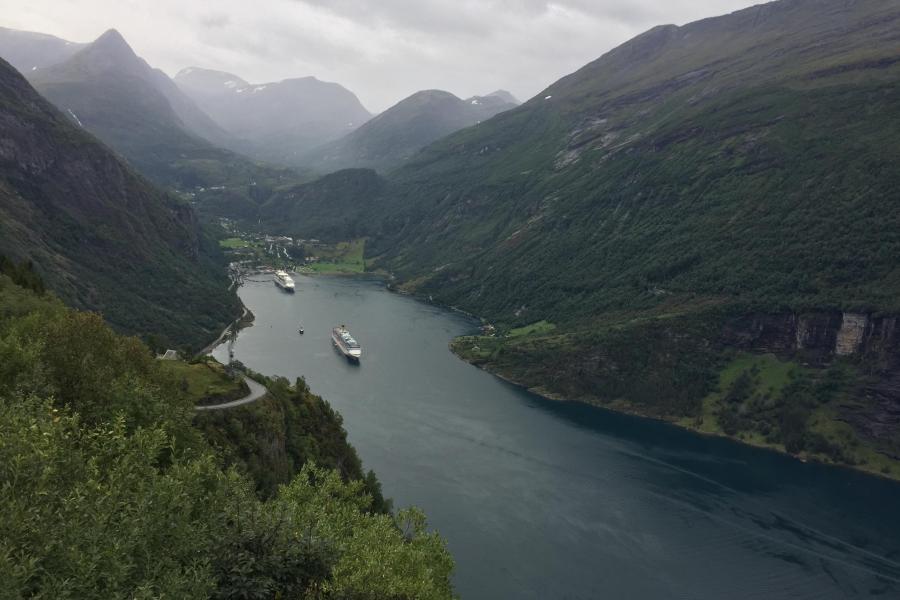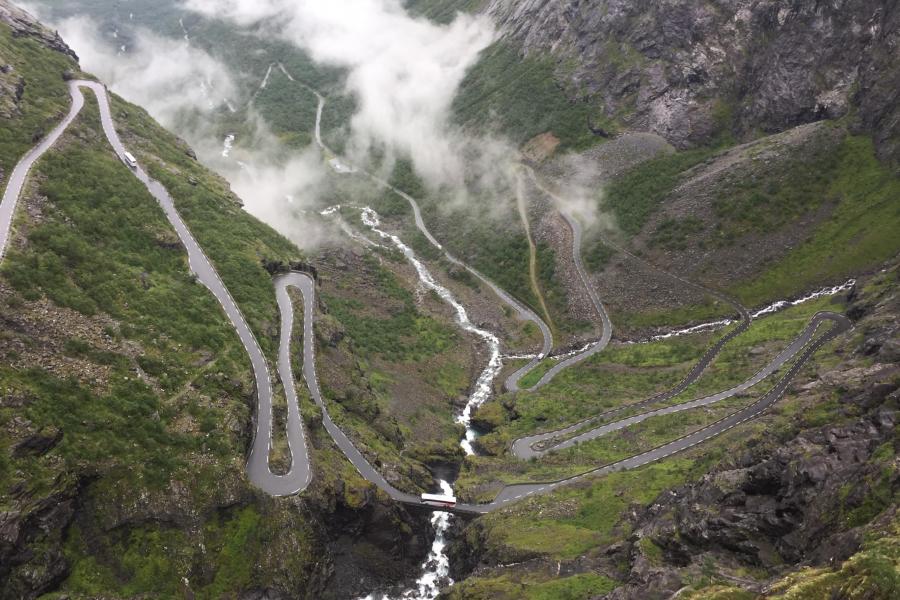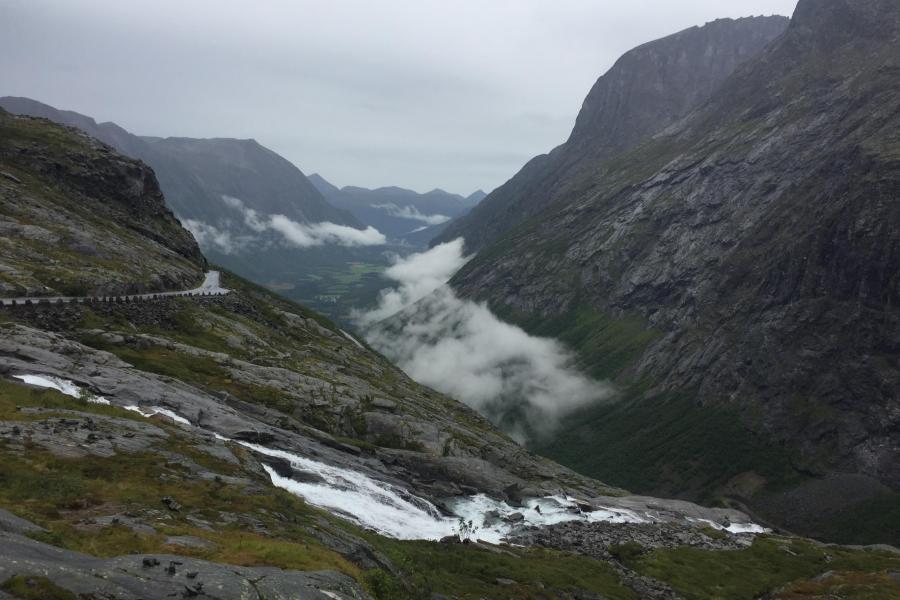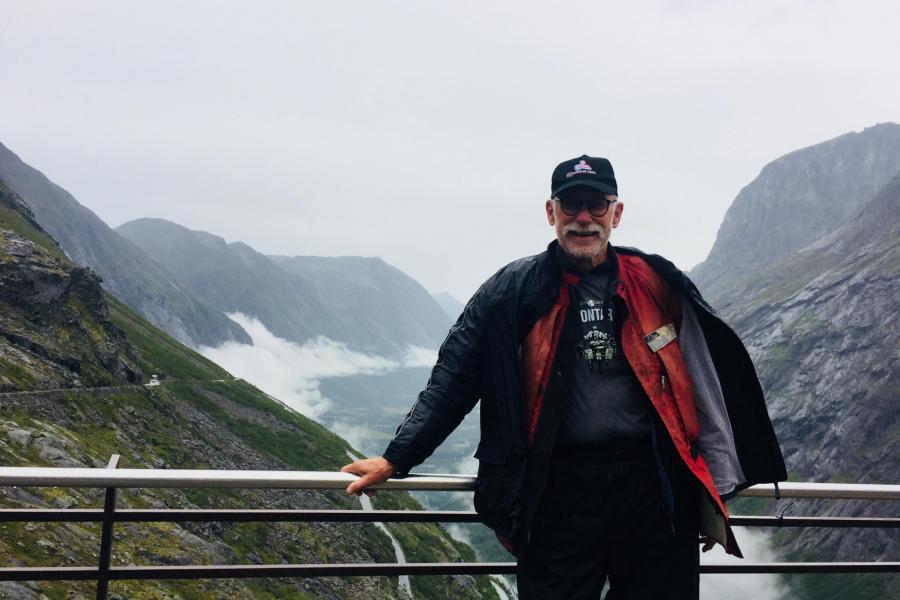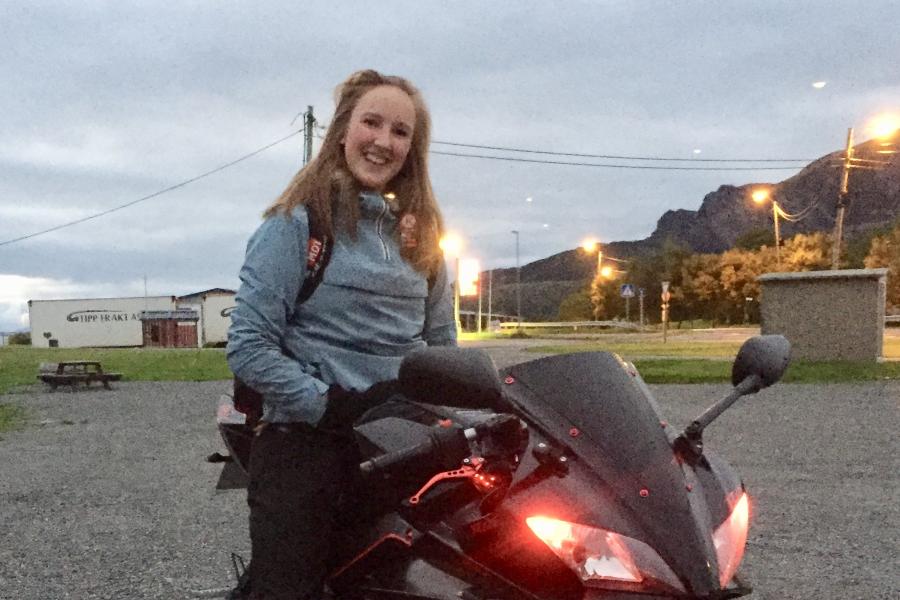Fun in the Rain
Country
Why would anyone want to spend 6 weeks moving at 60 mph through rain? Why would skiers want to go out in the cold and get snow down their necks? Or hunters get up at 4:00 AM to trudge through the woods in November? The weather might just be part of the experience. With the right gear, it does not feel miserable. It’s just the weather. To be honest, it sucks when you have to stop. Or fold up your wet tent. Or heat up your ramen soup over a backpacking stove. And in western Norway, rain and wind are part of the summer. “You should visit in February,” I was told more than once.
Scandinavians accommodate this climate with campgrounds that are equipped with enclosed huts, small cabins and common kitchens. This is a life saver when the rain really comes down and you’ve been riding a motorcycle for 6 or 8 hours.
I left the Lofoten Islands (in the rain) and had a 4-hour crossing on a ferry to Bodø on the mainland. “Mainland” is more of a technicality as the Norwegian coast is so pock-marked with inlets, fjords, glaciers, and other barriers to road travel that having to take four or even 5 ferries and a dozen or more bridges in one day is routine. In between are tunnels, the longest of which is 27 km. (that’s almost 18 miles long). That’s a lot of tunnel— but it’s not raining in there.
After seeking refuge in a rather remote camp behind someone’s house (they did have about a half-dozen huts for rent), I dried out and had a really sunny day following. (You really CAN dry boots over a hotplate). When it’s not raining, magnifiscent camping is available around every turn. Scandinavia allows “wild” camping as long as you are more than 150 meters from a dwelling, not on arable land without the farmer’s permission, and not in a place specifically posted as “no camping.” I stopped the following night along the bank of a river where a gas station-cum-convenience store had some grass and a few picnic tables. It may have been the village park.
I bought a liter of chocolate milk at the shop and was later visited by the young girl who had waited on me. She pulled up on a little “crotch-rocket”, shiny black and striped in red— including the wheels. She had added a bit more panache by installing red running lights in front, which she admitted were illegal— but it’s a small town, she explained. She was a high school student, and like every kid in Norway, she spoke excellent english. In fact, everyone from a road construction flagman to the check-out ladies at the supermarket— everyone— seemed to speak english. Certainly a credit to the European model of starting foreign languages in elementary school.
All along, I have been following route suggestions I had received from Norwegians on the Adventure Rider forum and the Horizons Unlimited website. This was especially helpful in staying off of the main arteries like the E-6 and in finding wonderful, little-utilized country roads. One road that does not typically appear on internet mapping sites is Route 63, a mountain road only open in summer. I later discovered it is northern Europe’s “Tail of the Dragon” (an iconic Tennessee motorcycle destination).
I spent the night at a hostel in the town of Andalsnes and discovered about a dozen other bikes from various countries in the parking area. All were there for Rte 63, the Trollstigen. This translates roughly to “trolls path.” It is a very narrow series of switchbacks over a high pass leading eventually to Geiranger Fjord, arguably the most dramatic fjord in Norway. The 70 or so miles over the mountain takes close to three hours and the competition for road “real estate” is provided by tour buses with 4-wheel steering to negotiate the hairpin turns. Even so equipped, buses often have to reverse to negotiate some turns. Nevertheless, it was an incredible ride over the top (even in the rain) and was followed by a long series of sweepers that descended the other side leading to a ferry across the fjord.iv

